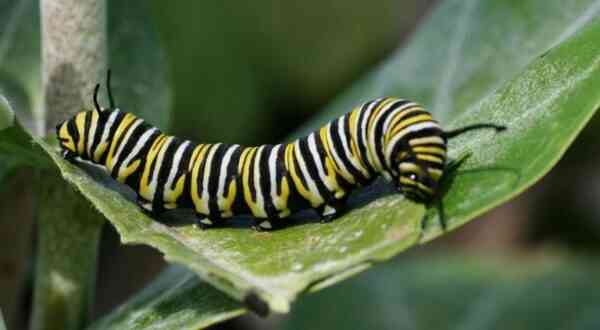We all know that caterpillars are one of the stages in the development of an insect, which then turns into a butterfly. However, many of them are so amazing in this phase of their life cycle that they can be considered separately. Caterpillars are very different, both harmless and not very, and some of them are so large that they can scare a person who grew up far from the tropics and hefty insects. Well, in some countries they are even eaten as a delicacy.
Interesting facts about caterpillars
- Most often, caterpillars feed on plant foods, leaves, flowers and fruits. However, there are other species, caterpillars, that prefer a diet of wax, wool or horny substances.
- Predatory caterpillars are also found in nature, feeding on other insects, aphids, ant larvae and pupae.
- The caterpillar eats the shell of its egg immediately after hatching, and then all the other eggs it comes across.
- The average caterpillar has about 4,000 muscles in its body, which is about 7 times more than in the human body.
- Caterpillars, like spiders, can secrete silk thread. From it they weave a cocoon for themselves (interesting facts about spiders).
- Pupating, the silkworm caterpillar weaves a cocoon, the shell of which consists of a continuous silk thread up to 1500 meters long in the largest cocoons. It is these cocoons that are collected to obtain natural silk.
- The caterpillars of many butterflies living in the northern latitudes do not have time to turn into a chrysalis in one summer, which is why they are forced to hibernate until the next summer.
- In Canada and Greenland, there are caterpillars that live up to 14 years before turning into a butterfly, since they do not have time to develop in a short summer, and they have to hibernate for the winter. At the same time, they can withstand temperatures down to -70 degrees.
- Caterpillars of some species live in anthills, being with ants in a symbiotic relationship. They impersonate a queen ant by secreting a special enzyme or making sounds with a sound eyelash. Ants feed and protect such a caterpillar (interesting facts about ants).
- Some caterpillars acquire toxicity due to the plants they eat. Therefore, birds do not eat them, knowing that they are poisonous.
- Immediately after hatching from the egg, the caterpillar begins to actively gain weight, eating everything that is suitable for it to eat , and in a few days its mass increases tenfold.
- Peru is home to unique caterpillars that resemble hermit crab in habits. They find suitable objects like a dry leaf rolled into a tube and use them as a shell for their protection.
- The smallest caterpillars do not exceed 2 mm, while the largest ones reach 12 cm.
- As they grow, the caterpillars molt several times, shedding the old, which has become a tight shell and growing a new one.
- The caterpillars have 6 eyes, and in most species, five of them are located in a row, and the sixth grows over them, in the center.
- In all caterpillars, the head consists of six segments fused together.
- On the underside of the head is the occipital foramen, which in most cases has the shape of a heart symbol.
- All types of caterpillars go through a pupation stage before turning into a butterfly.
- Most caterpillars live much longer than the butterfly they then turn into (interesting facts about butterflies).
- The muscles of the caterpillars, unlike human ones, perform the function of a skeleton for their body. They look like small balls of air, through which blood circulates through the interweaving of muscles.
